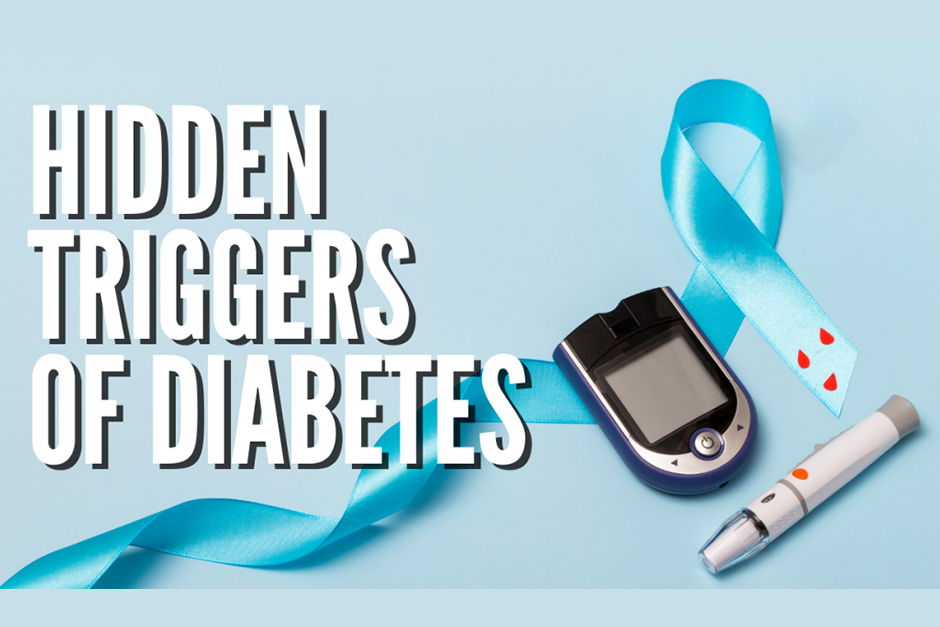As World Diabetes Day 2025 approaches, the global spotlight once again turns to a health crisis that continues to escalate, particularly in India. Often dubbed the “diabetes capital of the world,” India faces an alarming surge in cases, challenging conventional understanding and management strategies. While the public discourse predominantly focuses on sugar consumption, experts are increasingly highlighting that the enemy is far more nuanced. Insulin resistance, the precursor to Type 2 Diabetes, is not solely a consequence of sweet treats. Beneath the surface lie several hidden triggers that silently fuel this metabolic dysfunction, demanding our urgent attention.
Beyond the Sugar Bowl: Unmasking Metabolic Stressors
Insulin resistance occurs when cells in your muscles, fat, and liver don’t respond well to insulin and can’t easily take up glucose from your blood. As a result, your pancreas makes more insulin to help glucose enter your cells, but eventually, it can’t keep up, leading to high blood sugar. While dietary sugar plays a role, a deeper dive reveals an intricate web of lifestyle and environmental factors. For many Indians grappling with modern urban life, these stressors are becoming increasingly prevalent.
Chronic Stress: The Silent Hormone Disruptor
In the fast-paced lives of Indian professionals and individuals alike, chronic stress has become an unwelcome constant. Whether it’s work pressure, financial worries, or societal expectations, prolonged stress elevates cortisol levels. This “fight or flight” hormone is designed to provide quick energy by increasing blood glucose. However, sustained high cortisol levels can make cells less sensitive to insulin, driving insulin resistance. The constant demand on the body’s stress response system exhausts it, making it harder for insulin to do its job effectively.
The Sleep Debt: A Hidden Pathway to Resistance
Sleep deprivation is an unacknowledged epidemic in modern India, often sacrificed for productivity or entertainment. Yet, insufficient or poor-quality sleep profoundly impacts metabolic health. Research indicates that even a few nights of inadequate sleep can significantly impair insulin sensitivity. Sleep disruption alters hormones that regulate appetite and metabolism, such as ghrelin and leptin, and elevates cortisol and growth hormone, both of which can lead to increased insulin resistance. For many, burning the midnight oil could be silently fuelling their diabetes risk.
Lifestyle and Environment: Deeper Dive into Resistance
Our daily habits and the environments we inhabit are often overlooked culprits in the development of insulin resistance. It’s not just about what we eat, but how we live and what we’re exposed to.
Sedentary Living, Beyond the Gym
While many acknowledge the importance of exercise, the pervasive nature of sedentary lifestyles often goes unaddressed. Even those who engage in regular workouts might spend the vast majority of their day sitting – at desks, in traffic, or in front of screens. Prolonged periods of inactivity reduce the muscles’ ability to take up glucose from the blood and decrease insulin sensitivity. This constant sitting, common in urban Indian settings, contributes significantly to metabolic sluggishness, making cells less responsive to insulin’s signals.
Gut Health: The Unsung Hero of Metabolism
The human gut, home to trillions of microorganisms, plays a far more critical role in health than previously imagined. An imbalanced gut microbiome, known as dysbiosis, can trigger chronic low-grade inflammation throughout the body. This inflammation is a known driver of insulin resistance, interfering with insulin signaling pathways in various tissues. The shift from traditional, fiber-rich Indian diets to processed foods high in refined sugars and unhealthy fats disrupts this delicate microbial balance, fostering an environment ripe for metabolic dysfunction.
Environmental Endocrine Disruptors: Unseen Threat
Perhaps the most insidious triggers are environmental endocrine-disrupting chemicals (EDCs). Found in plastics (BPA, phthalates), pesticides, and industrial pollutants, these chemicals mimic or interfere with the body’s hormones, including insulin. Exposure to EDCs, even at low levels, can disrupt metabolic processes, impair insulin sensitivity, and promote fat storage. In a rapidly industrialising nation like India, environmental pollution and agricultural practices often expose individuals to these compounds, adding another layer of complexity to the diabetes epidemic.
Addressing the diabetes crisis in India requires a comprehensive approach that extends beyond simple dietary advice. Understanding these hidden triggers is the first step towards prevention and effective management.
“While diet and exercise remain foundational, the growing prevalence of diabetes, particularly in India, compels us to look beyond the obvious,” observes Dr. Sameer Khan, a leading endocrinologist based in Mumbai. “Factors like chronic stress, poor sleep, gut health, and environmental toxins are silent contributors to insulin resistance. A holistic approach that acknowledges these elements is crucial for a meaningful impact on public health.”
As World Diabetes Day 2025 reminds us of the ongoing battle, it’s imperative for individuals and policymakers alike to recognise the multifaceted nature of insulin resistance. Moving forward, a paradigm shift is needed – one that embraces not just dietary vigilance but also stress management, adequate sleep, gut health awareness, and environmental consciousness. By unmasking these hidden enemies, we can better equip ourselves to combat diabetes and foster a healthier future for all.




